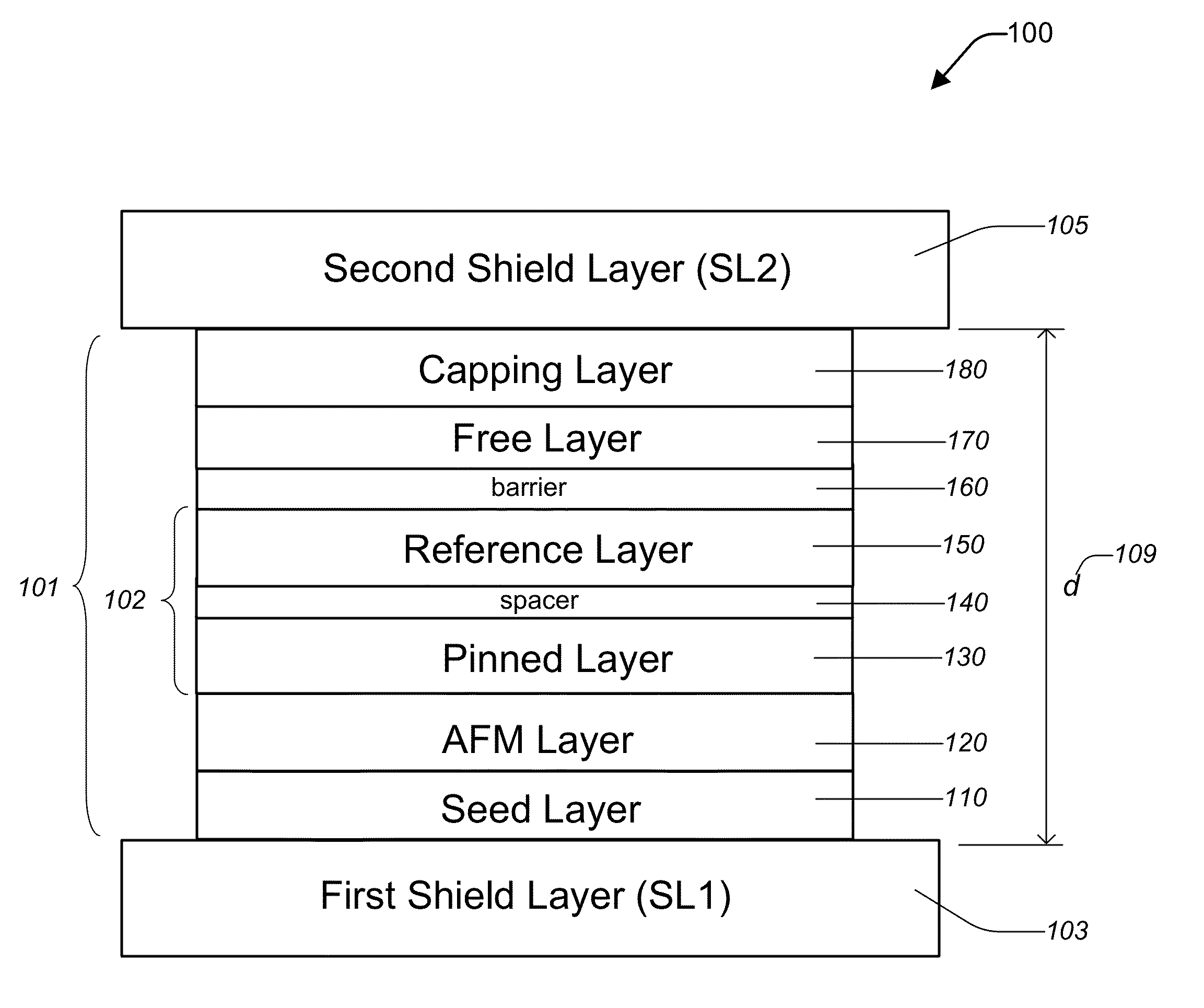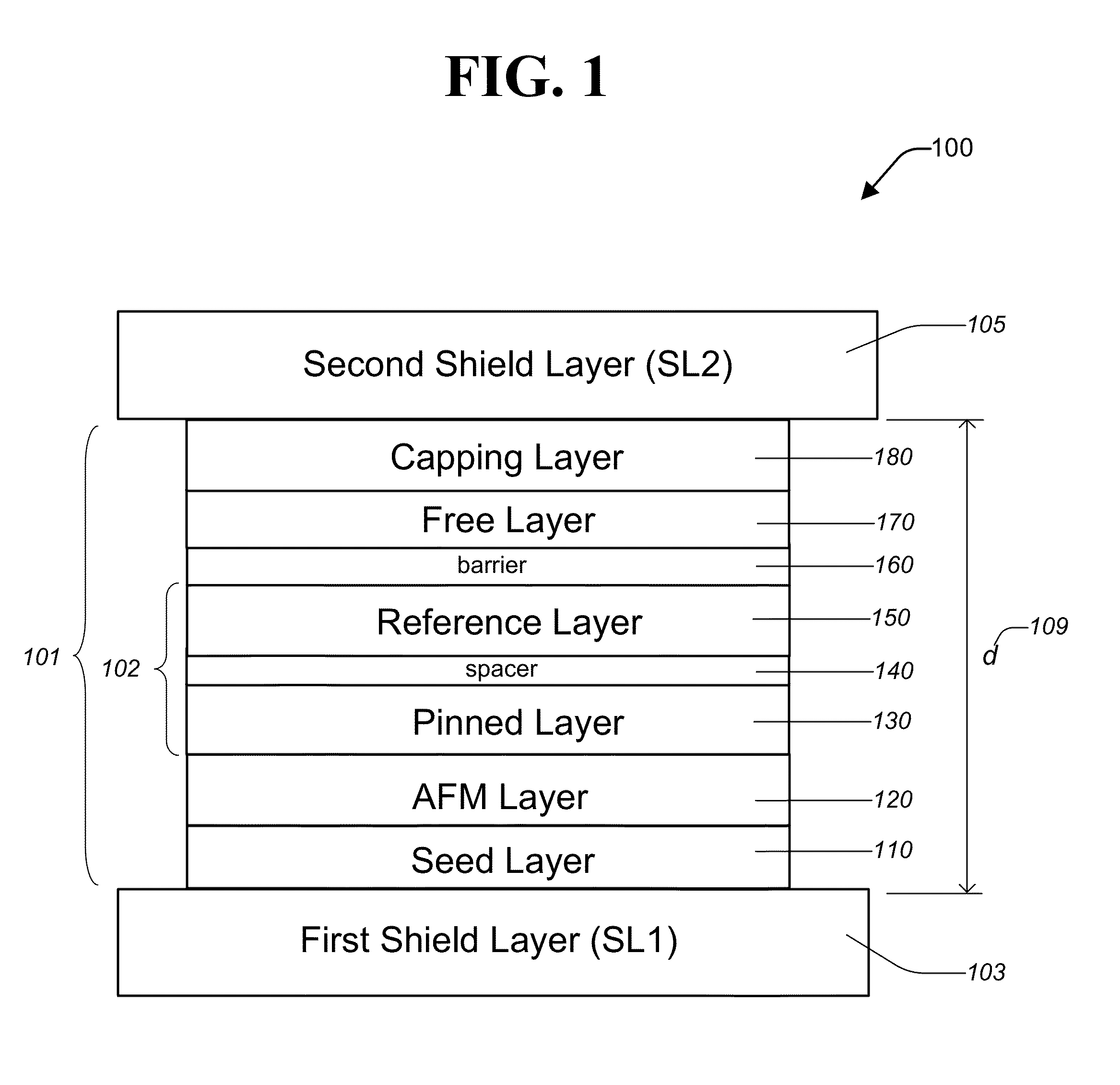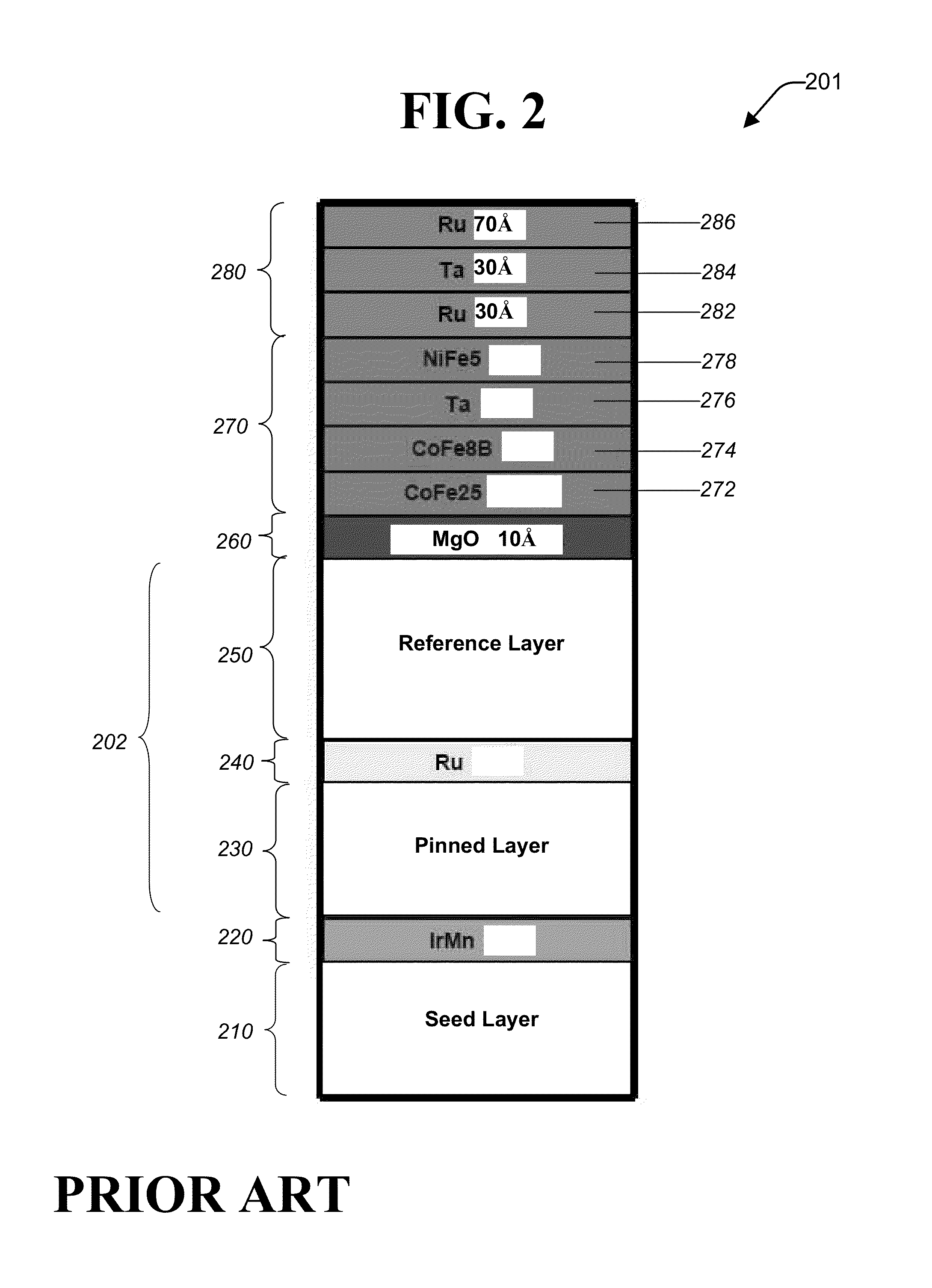Magnetoresistive sensors having an improved free layer
a magnetoresistive sensor and free layer technology, applied in the field of magnetoresistive transducers, can solve the problems of high gilbert damping constant and magnetic noise induced, and achieve the effects of low gilbert damping constant, reduced overall thickness, and high magnetization
- Summary
- Abstract
- Description
- Claims
- Application Information
AI Technical Summary
Benefits of technology
Problems solved by technology
Method used
Image
Examples
Embodiment Construction
[0015]In the following detailed description, numerous specific details are set forth to provide a full understanding of the present invention. It will be apparent, however, to one ordinarily skilled in the art that the present invention may be practiced without some of these specific details. In other instances, well-known structures and techniques have not been shown in detail to avoid unnecessarily obscuring the present invention.
[0016]FIG. 1 is a diagram depicting a TMR element 100 according to one aspect of the subject disclosure. The TMR element 100 includes a sensor stack 101 disposed between a first (bottom) shield layer (SL1) 103 and a second (top) shield layer (SL2) 105 and having a shield-to-shield distance (d) 109. For simplicity, FIG. 1 is not drawn to scale. The sensor stack 101 includes a seed layer 110 disposed over the SL1103, a pinning or anti-ferromagnetic (AFM) layer 120 disposed over the seed layer 120, a bottom electrode 102 disposed over the AFM layer 120, a tu...
PUM
| Property | Measurement | Unit |
|---|---|---|
| thickness | aaaaa | aaaaa |
| thickness | aaaaa | aaaaa |
| thickness | aaaaa | aaaaa |
Abstract
Description
Claims
Application Information
 Login to View More
Login to View More - R&D
- Intellectual Property
- Life Sciences
- Materials
- Tech Scout
- Unparalleled Data Quality
- Higher Quality Content
- 60% Fewer Hallucinations
Browse by: Latest US Patents, China's latest patents, Technical Efficacy Thesaurus, Application Domain, Technology Topic, Popular Technical Reports.
© 2025 PatSnap. All rights reserved.Legal|Privacy policy|Modern Slavery Act Transparency Statement|Sitemap|About US| Contact US: help@patsnap.com



